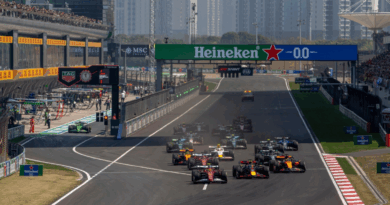Ferrari’s disappointing performance at the Australian Grand Prix wasn’t just down to strategic missteps—it turns out the team narrowly avoided a major technical disqualification that forced them to compromise their pace.
Ferrari showed promising speed in practice at Albert Park, but that pace mysteriously disappeared by Saturday. Charles Leclerc and Lewis Hamilton could only manage seventh and eighth in qualifying, a far cry from their earlier form. In the race, Leclerc briefly climbed to fifth, while Hamilton was stuck behind Alex Albon and Yuki Tsunoda until a chaotic, rain-affected finish saw them scrape into the top 10.
Many initially blamed Ferrari’s decision to delay pit stops for intermediate tires when the late-race rain fell. However, while the strategy call undoubtedly cost them positions, it was not the root cause of their struggles.
A Setup Mistake That Could Have Been Catastrophic
According to a report from Motorsport.com.it, Ferrari’s difficulties stemmed from a crucial error in their simulator-derived race setup. The issue? The car’s suspension ride height was too low, causing excessive wear on the underfloor skid blocks. Had Ferrari run the race without correcting it, both Leclerc and Hamilton risked disqualification.
Formula 1 teams rely heavily on remote simulation centers, where engineers and test drivers fine-tune setups before race weekends. In this case, however, the setup Ferrari identified for Melbourne turned out to be incorrect. As a result, the SF-25 ran too close to the ground during Friday’s sessions, giving it strong one-lap pace but presenting a serious durability issue.
The Risk of Disqualification Forces a Change
Running too low on ride height is dangerous because it accelerates wear on the car’s plank and skid blocks—components that regulate how much the floor can scrape against the track. Excessive wear on these elements has led to disqualifications before, as seen in last year’s United States Grand Prix, where both Leclerc and Hamilton were stripped of their results for the same infraction.
To avoid a repeat of that disaster, Ferrari was forced to make adjustments before qualifying, raising the ride height and sacrificing aerodynamic efficiency in the process. This explains why the Scuderia suddenly lost competitiveness compared to their Friday form.
Ferrari Looking Ahead to China
The question now is whether this was a one-off mistake or an inherent issue with the SF-25’s design. Team principal Frédéric Vasseur remains optimistic, emphasizing the importance of preparation for the upcoming Chinese Grand Prix.
“It will be important to have prepared the weekend well in the Maranello simulator,” Vasseur said. “As a team, we will take care of every little detail to maximize the potential of the SF-25s, supporting Charles and Lewis in the best possible way, who have always liked this track.”
With Shanghai presenting its own unique challenges—including a long back straight and unpredictable weather—Ferrari will be desperate to ensure their simulator work aligns perfectly with real-world conditions to avoid another costly weekend.




